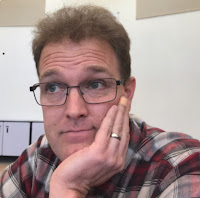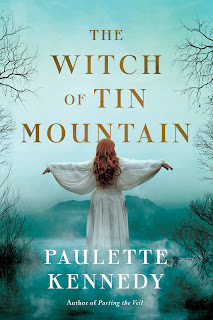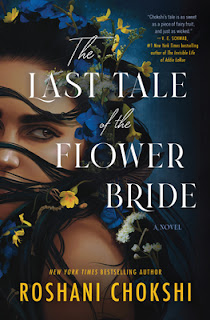Published September 17, 2015 by Inklings Publishing
In Twisted Reveries, suspense author Meg Hafdahl introduces us to thirteen unforgettable women. They include a grieving mother, a librarian living on the edge of fantasy, and a pyromaniac motel manager. In all thirteen spine-tingling tales these women are faced with their deepest fears, as they are forced to become the hero or villain of their own story. The Rochester Post Bulletin describes, "Everything is not as it seems in the short, 'Twilight Zone' like tales Hafdahl writes." Packed with twists and intrigue, Twisted Reveries will satisfy fans of horror, suspense, and captivating female protagonists. As Amanda walks home alone in the eerie town of Willoughby, she is unsettled by a malevolent stalker in close pursuit, who is somehow familiar... Louise is kidnapped off a snowy, rural road when she is distracted by A Flash of Orange. When a twist of fate allows her escape, her true horrifying test begins... A group of strangers, including fearful Kelly, are trapped in the infusion ward of a hospital, and something hungry is targeting their weaknesses. Will Kelly dig deep and find her Guts? When Hannah Goes Home she brings her fiancee to the squalid reality of her childhood. But she is determined to keep one, awful truth from surfacing... Immerse yourself in the dark, pulse-pounding landscapes of Twisted Reveries: Thirteen Tales of the Macabre.
The Haunted House in Horror Literature
by meg hafdahl
With the recent success of Grady Hendrix’s (My Best Friend’s Exorcism, The Final Girl Support Group) newest novel, How To Sell A Haunted House, I naturally started thinking about this well-loved trope of a house bursting with ghosts. It’s also been on my mind as my co-author and I have been crossing the USA, documenting haunted places for our travel book coming in 2024. I don’t need to tell you that haunted houses are abundantly used as settings in the horror genre, and they share many similarities. You know; the drafty rooms, mysterious corridors, spider-webbed attics, and, most vital of all, the ghosts. These are often apparitions of the former owners, often people who were murdered or died with the always popular “unfinished business.” They can be invisible, or maybe show themselves, dressed in the clothes of their era. The haunted house is certainly not a new idea, like the boogeyman himself, it is borne of our natural, human fears. Home is where we should feel safe. No matter the indignities of life outside, we should all have a safe place in which to retreat. When this is disturbed, it immediately brings horror to the characters, and their readers.
My favorite haunted house story is Shirley Jackson’s The Haunting of Hill House. I’m not alone, as it has inspired many films and works, as recently as Mike Flanagan’s Netflix series. Written at a time when women were grappling with their place in the home (on the cusp of the sixties) Jackson uses the conventions of a haunted house to point to the destruction of the female in forced domesticity. Home, to Jackson, is inherently female, as well as maternal. When Stephen King created ghosts in The Shining (okay a hotel, but close enough) he used the tropes of the haunted house to further a story about a man haunted by his own past, as well as his ever-present addiction. And we know Edgar Allan Poe meditated on the nature of guilt and grief through some of the first American haunted dwellings. Perhaps what makes a haunted house so prolific in horror literature, is that it is an enticing template on which authors can inject their own fears. Isn’t that what we do when we enter a Halloween haunted house? As we traverse the slim corridors and actors jump out at us, we are individually dreading all the things that could happen. For some its our fear of something crawling on our neck, for others it’s a bloodthirsty ghost of that person we killed! Oops!
As a horror fiction writer I am not immune to this trope. Ghosts creeping around houses are just plain scary, it’s something as humans we’ve collectively agreed gives us goosebumps. It also delves into what little we know about an afterlife. In my novel Daughters of Darkness, I introduced a ghost who speaks to a child through an air vent. This juxtaposition of the scary and the mundane is another aspect, I think, that makes haunted houses so appealing.
Books are not the only reason we share a collective understanding of the haunted house. They are alive and well in films from every decade, like the Vincent Price starring The House on Haunted Hill in 1959 to the vividly gothic Crimson Peak in 2015. Let us not forget the chairs moving in formation in Poltergeist, and that clown toy hiding in the shadows that still gives me nightmares…
However you like your haunted house there’s one for you.
Here’s some recommendations of some of my favorites if want to explore some haunted houses on your own (what could go wrong?)
Books: The Good House by Tananarive Due, Hell House by Richard Matheson, The Hacienda by Isabel Canas, Rebecca by Daphne Du Maurier
Movies: The Grudge, The Changeling, 1408, The Others, The Innocents
Horror and suspense author Meg Hafdahl is the creator of numerous stories and books. Her fiction has appeared in anthologies such as Eve’s Requiem: Tales of Women, Mystery and Horror and Eclectically Criminal. Her work has been produced for audio by The Wicked Library and The Lift, and she is the author of two popular short story collections including Twisted Reveries: Thirteen Tales of the Macabre. Meg is also the author of the two novels; Daughters of Darkness and Her Dark Inheritance called “an intricate tale of betrayal, murder, and small town intrigue” by Horror Addicts and “every bit as page turning as any King novel” by RW Magazine. Meg, also the co-host of the podcast Horror Rewind and co-author of The Science of Monsters, The Science of Women in Horror, The Science of Stephen King and upcoming The Science of Serial Killers, lives in the snowy bluffs of Minnesota.
The Haunted House in Horror Literature
by meg hafdahl

.png)
.jpg)
.jpg)
























